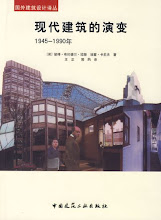


Still a dramatic presence in the Venetian lagoon, the island of Torcello presents to the contemporary visitor the surviving fragments of a once significant centre. Depopulation has left three major monuments, a cathedral, a church and a campanile, and a cluster of lesser structures which highlight the values of a civilisation which saw itself as vulnerable to barbarian attack. The cathedral of Santa Maria Assunta takes a basilican form compatible with its foundation date of 639 and its reconstruction in 1008. Adjacent to its simple linear form the complex centralised church of Santa Fosca is connected by a continuous arcade dated to the twelfth century, the appearance of which has suggested the intention to evoke similarities to sites in the Holy Land. Overlooking this pair of structures, the campanile served the additional purposes of lighthouse and refuge. In a characteristic Byzantine manner, the undecorated exterior surfaces contrast with the rich mosaic images of the interiors, especially the great image of Mary, Mother of God in the cathedral apse, and the Last Judgement opposite it on the entrance wall which backed on to the now ruined baptistery. This emphasises in architectural and decorative form the separate status of the unbaptised prior to entry into the church as a community and as an urban monument. So the baptistery represents Christian rebirth, followed by passage through the wall with the Last Judgement, and the testing of the faithful, through to consummation at the high altar beneath the image of Virgin and Child in the golden field of heaven. As a collection of architectural types, (basilica, martyrium, campanile, baptistery) the piazza foreshadows the elements of more populous cities which developed on the Italian mainland into the medieval period.
Although the present basilica is a later rebuilding, the difference between Christian worship and the pagan ceremonies which preceded them are apparent. The basilica - type had developed out of Roman civil structures for trade and the dispensation of justice but the christian basilica internalised the language of Roman public space with the perimeter colonnades and triumphal arch. In some instances the columns would themselves have previously lined fora and other public spaces so we can assume that early christians would have been aware of the connection, and the isolation of Torcello underlines the importance of this difficult appropriation of urban material to make a christian city. Similarly the form of the apse, particularly with its image of Christ or the Virgin would have taken on the inheritance of triumphal imagery with traditional figures of victory replaced at Torcello by images of the Annunciation. Such use of physical and conceptual spolia represented the triumph of Christianity over the pagan past, and in the Venetian context specifically her succession to the Byzantine and Roman empires. This tradition of cultural appropriation is also evident in Santa Fosca, a later addition to the complex, in the form of a martyrium, or centralised church based on Byzantine precedents. Its separation would allow for the creation and display of processions. Deborah Howard has suggested that its form, especially with its encircling porch is intended to evoke structures in Jerusalem such as the Dome of the Rock, or the church of the Holy Sepulchre. This is the period of the Crusades in which the Venetians were heavily involved, especially the Fourth Crusade in 1204 when Constantinople was sacked.






No comments:
Post a Comment